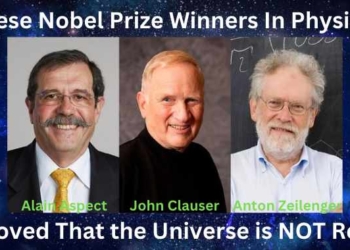
By Michelle Starr | Science Alert
Based on what we know about gravitational waves, the Universe should be full of them. Every colliding pair of black holes or neutron stars, every core-collapse supernova – even the Big Bang itself – should have sent ripples ringing across spacetime.
After all this time, these waves would be weak and hard to find, but they're all predicted to make up a resonant ‘hum' that permeates our Universe, referred to as the gravitational wave background. And we may have just caught the first hint of it.
You can think of the gravitational wave background as something like the ringing left behind by massive events throughout our Universe's history – potentially invaluable to our understanding of the cosmos but incredibly difficult to detect.
“It is incredibly exciting to see such a strong signal emerge from the data,” said astrophysicist Joseph Simon of the University of Colorado Boulder and the NANOGrav collaboration.
“However, because the gravitational-wave signal we are searching for spans the entire duration of our observations, we need to carefully understand our noise. This leaves us in a very interesting place, where we can strongly rule out some known noise sources, but we cannot yet say whether the signal is indeed from gravitational waves. For that, we will need more data.”
Nevertheless, the scientific community is excited. More than 80 papers citing the research have appeared since the team's preprint was posted to arXiv in September of last year.
International teams have been working hard, analyzing data to try to refute or confirm the team's results. If it turns out that the signal is real, it could open up a whole new stage of gravitational wave astronomy – or reveal to us entirely new astrophysical phenomena.
The signal comes from observations of a type of dead star called a pulsar. These are neutron stars that are oriented in such a way that they flash beams of radio waves from their poles as they rotate at millisecond speeds comparable to a kitchen blender.
These flashes are incredibly precisely timed, which means that pulsars are possibly the most useful stars in the Universe. Variations in their timing can be utilized for navigation, probing the interstellar medium and studying gravity. And, since the discovery of gravitational waves, astronomers have been using them to look for those, too.
That's because gravitational waves warp spacetime as they ripple through, which theoretically should change – just very slightly – the timing of the radio pulses given out by pulsars.
“The [gravitational wave] background stretches and shrinks space-time between the pulsars and earth, causing the signals from the pulsars to arrive a bit later (stretch) or earlier (shrink) than would otherwise happen if there were no gravitational waves,” astrophysicist Ryan Shannon of Swinburne University of Technology and the OzGrav collaboration, who was not involved in the research, explained to ScienceAlert.
A single pulsar with an irregular beat would not necessarily mean much. But if a whole bunch of pulsars displayed a correlated pattern of timing variation, that could constitute evidence of the gravitational wave background.
Such a collection of pulsars is known as a pulsar timing array, and this is what the NANOGrav team has been observing – 45 of the most stable millisecond pulsars in the Milky Way.
They haven't quite detected the signal that would confirm the gravitational wave background.
But they have detected something – a “common noise” signal that Shannon explained, varies from the pulsar to pulsar but displays similar characteristics each time. These deviations resulted in variations of a few hundred nanoseconds over the 13-year course of the observing run, Simon noted.
















![Everything You Ever Wanted to Know About 9/11 Conspiracy Theory in Under 5 Minutes [VIDEO] | by James Corbett](https://consciouslifenews.com/wp-content/uploads/2018/09/911-a-conspiracy-theory-120x86.jpg)